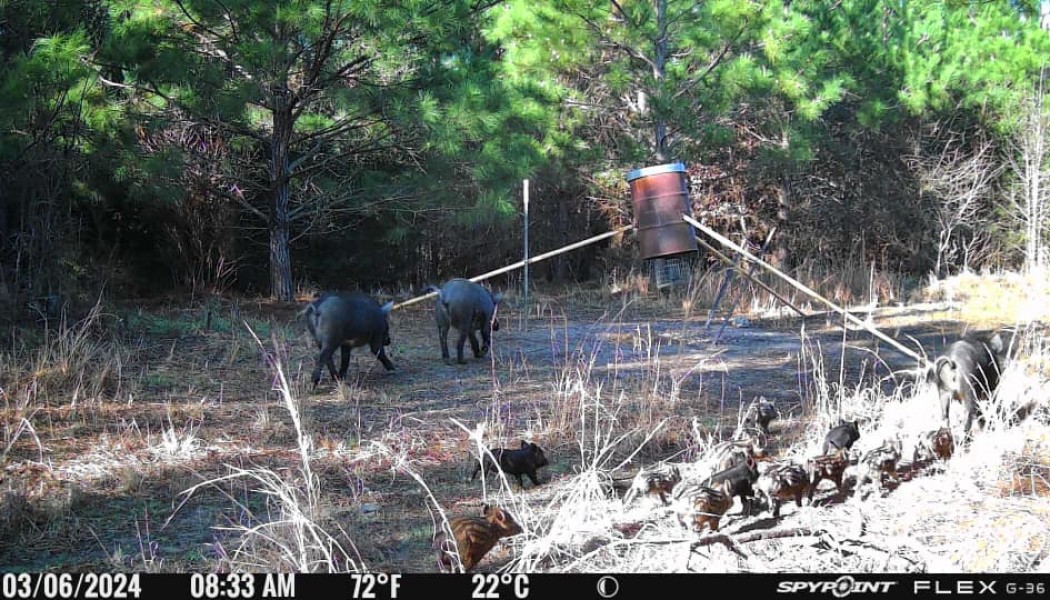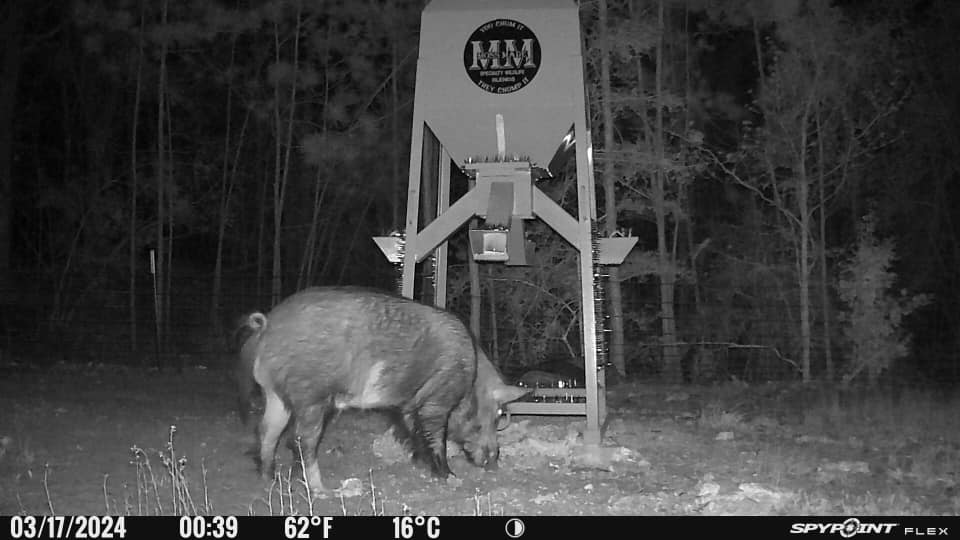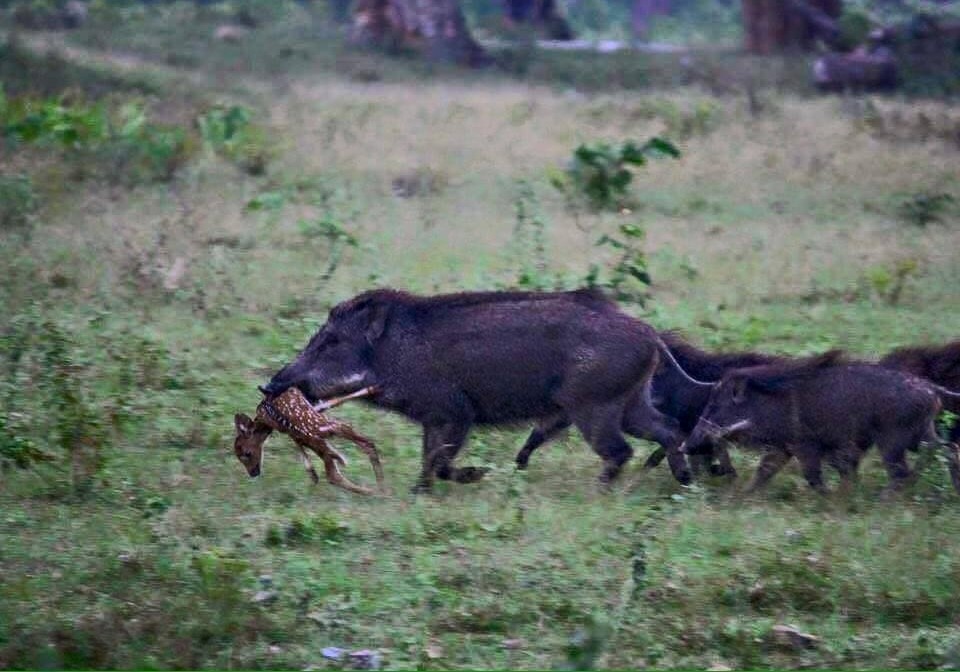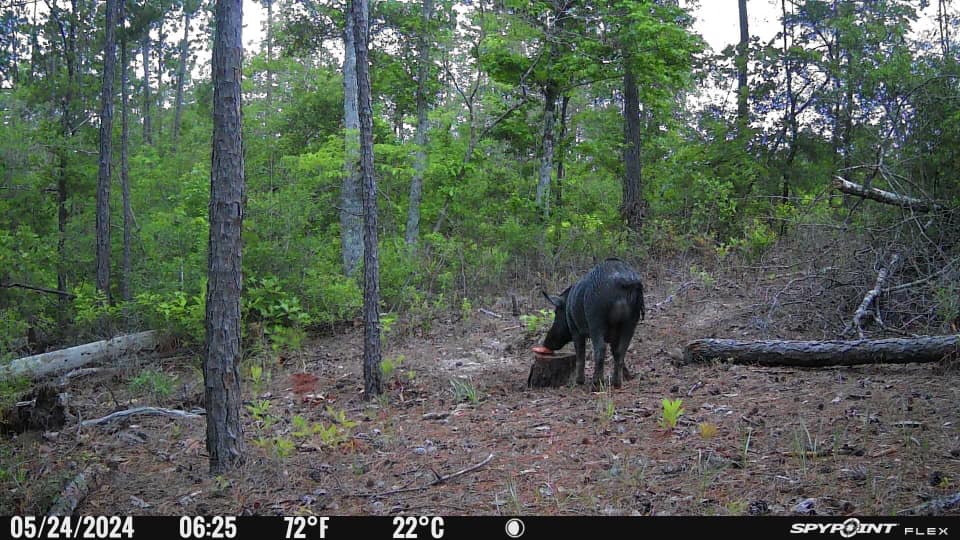
Feral pigs (Sus scrofa) are not native to North America but were introduced into the Americas by explorers in the 1500s. Since then, they have become an invasive species, leading to open hunting seasons in many states and even Canada.
Today, feral hogs not only present threats to animals such as quail, grouse, woodcock, wild turkeys, squirrels, weasels, and raccoons, but their presence can significantly impact the health and wellness of whitetail deer herds. Read on to find out how.
1. Wild hogs are more fertile and proliferate faster than deer.
The National Deer Association reports that wild pigs have the highest reproductive potential of any wild, hoofed mammal in North America. This means they can quickly outnumber deer in any area they are found. According to a study conducted by Sarah Chinn et al at the University of Georgia’s Savannah River Ecology Lab and Warnell School of Forestry and Natural Resources:
• A wild sow can reach sexual maturity at as young as three months of age.
• Sows breed any time of year, all year long, with a gestation of about 115 days.
• Litters average about six piglets, with a range of one to 12.
• The average sow can produce two full litters in a year-and-a-half.
In comparison, whitetail deer:
• Reach sexual maturity at about seven to nine months old if they hit a certain weight threshold their first fall, but most do not breed until their second fall at age 1½.
• Does can only breed once per year, with a gestation period of about 200 days.
• The average adult doe drops one to two fawns per birth and can average between two and three only at mature ages, in the best conditions, and in the most productive regions.
2. Wild hogs can destroy deer habitat.
Without question, the presence of hogs can damage entire ecosystems. Rooting, trampling, wallowing, and other behaviors damage the ground by altering soil chemistry, encourage the spread of invasive plant species, and increase soil erosion. In some cases, they can even reduce timber diversity.
In wetland areas, hog presence can impact water quality. They can damage banks and dams, and cause general runoff. Furthermore, excrement can introduce E. coli into waterways, which can lead to infection of other animals such as deer. This can even change water pH and oxygen levels.
 (Photo credit: Stephen Rhyne)
(Photo credit: Stephen Rhyne)
3. Wild hogs compete with deer for food (and food plots).
Sounders, or family groups of hogs, will devour pockets of hard and soft mast, which deer would normally feed on for longer durations. Red oak acorns, white oak acorns, beech nuts, hickory nuts, and more, can be quickly and unnaturally depleted by hogs.
Hogs will also commonly seek out and plunder food plots meant for deer, depleting resources and creating costly problems for land managers trying to support deer herds throughout the year.
4. Wild hogs are opportunistic feeders (that will attack fawns).
While the diet of wild hogs is typically made up of mostly plant material like grasses, mast, shoots, roots, and tubers—they are considered opportunistic feeders that will also prey on other animals if given the chance. “We’ve [gotten] photos of feral hogs carrying fawns," says Jim LaCour, state wildlife veterinarian for the Louisiana Department of Wildlife and Fisheries. "If the hogs are coming through a field and they happen to come across it, they’re going to eat it."

(Photo credit: Fox News)
5. Wild hogs carry disease and health risks.
Wild hogs are capable of carrying and transmitting at least 30 bacterial, fungal, and viral diseases. Many of these infectious viruses and bacterium can jump the species barrier from hogs to other animals, such as deer, or even humans. Infection of deer herds can lead to birth defects, abortion, or even death. This can very quickly negatively impact deer populations.
For these reasons and more, controlling wild hog populations is important to the stability of whitetail deer populations. After decades of trying, and research studies focused on the matter, hunting is not considered an effective removal method. Instead, a variety of lethal and non-lethal techniques are used to mitigate the damage caused by this invasive species and promote population control.

(Photo credit: Stephen Rhyne)
What can you do?
• Learn what management practices are being used in your area.
• If local wildlife control requests sightings of feral hogs to be reported; note the date and time of the sighting, note the location (intersecting roads, landmarks, or GPS coordinates), snap pictures or a video (if possible), note the number of hogs and whether piglets were present, and note whether it is an isolated incident or if you have seen the same hog or hogs multiple times. This information will help authorities track down and monitor the feral hog population in your region.
• Use trail cameras to scout known hogs for hunting and trapping.



